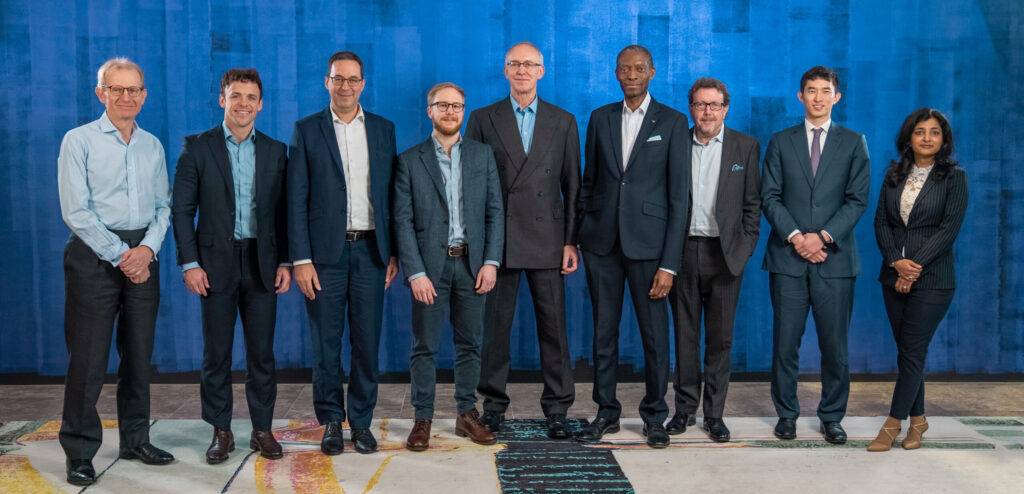Technologies from the simple, like mobile apps and text messaging; to the complex, like computer vision and deep analytics, have been deployed by carriers with varying degrees of success and adoption. But what’s the next step in designing the transformed claims process of the future? Experts weigh in.

Increased straight through processing
First notice of loss is great, but the process being triggered by that notice is still the same regardless of the size of the claim, claims executives say. For less complex claims, straight-through digital processing from first notice to adjustment to payment can be achieved.
“This year we’re tying together a lot of specific digital capabilities into a comprehensive, beginning to end, straight-through processing for simple claimants,” says Pat Gee, SVP of claims of Travelers. “The way we’re trying to build these mechanisms is, even if they start in the digital channel and they get part way, if they then determine that they want to speak with someone, or they wanna step outside the straight-through processing.”
With the volume of technology implementations over the past few years, Farmers is also looking to more tightly and logically integrate them on the back end.
“A big part of the digital experience is to ensure that our customers aren’t having a siloed experience,” says Samantha Santiago, head of claims strategy and automation for Farmers. “We want our technology to be able to talk to each other. A photo should be pulled straight into the management portal seamlessly. That integrated technology experience is what we’re looking for.”
Proactive personalized reassurance
As Gee of Travelers notes, nervous claim consumers tend to step out of a digital process at certain points in the process. Martha Frye, SVP of personal lines claims for Nationwide, says that insurers need to use the data at their fingertips to identify those times and use their available interaction mechanisms to provide the most commonly requested information.
“We need to recognize times to send a message to the customer that something crucial has happened or even just a reassurance that their repair is happening, or if it’s taking longer than expected we’ve automatically extended their rental,” she says. “The trick is really bringing that data and analytics and the learnings of the customer journey, and when it is the customer starts to feel unsure, pushing the right information at the right times that reassures a customer that they don’t need to call us.”
Ramon Lopez, VP of claims operations for USAA, says that the industry can use the data at their fingertips to give a better picture of what customers can expect from their claim right after FNOL. He likens it to the purchase suggestions on an e-commerce site, “something like ‘people like you who have claims like this can expect this kind of experience’” and give them a timeline with clear next steps.”
“‘For other people who’ve had accidents like this, here’s the process and experience” delivered in a very tailored and personalized way,” he explains. “That way there’s no surprises and less likely they will experience surprise costs.”
Integration with UBI and sensorization
As more insurance products are designed around a connected car or home, the relevant data for the claims process will skyrocket, claims leaders predict.
“We have KnowYourDrive and [a partnership with] Hedge for home security. How can we harness that information and use it to ease the burden for the customer?” says Lynn Bostedt, director of American Family Insurance’s digital claims team. “Usage-based insurance is a good program that sort of picked up in the pandemic a little bit, cause people weren’t driving as much. People are maybe more willing to release that data and allow that to be used when they’re getting a benefit on the other side. So it really has to be an end to end package.”
USAA’s Lopez agrees. His company recently went live with crash detection in its SafePilot app. He says the connected insurance product is also helpful in bringing the predictiveness and certainty to customers that he talked about.
“The advanced analytics that exist now, to be able to say with certainty that this claim that just happened – at this miles per hour, at this geographical location – often goes like this, whereas maybe that would not have been as personalized,” he says. “You wouldn’t have as much data up front before, and we can understand that better and begin personalizing that experience at the onset.”
Risk management partnerships
In fact, claims leaders say that the integration of connected technology with the insurance product is revolutionizing the relationship between the insured and the insurer’s claims department.
“We have dealt with claims in isolation, but now we can build policies that enable the claims experience to be more efficient for the customer,” says Grace Hanson, chief claims officer of Hippo. “Everything from purchasing the insurance, to the contract language itself, to the claims experience to pay out. I think about making sure that the repair process is also incorporating benefit and value to the customer to prevent the next loss.”
Rather than a purely reactive function, the claims unit of the future will also be responsible for monitoring and owning the relationship with customers through their connected devices, and getting in touch, in some cases, hopefully before a loss has even occurred.
“If a connected home device can alert us to a potential problem and we can reach out to the customer and say ‘replace this’ or ‘check that,’ we can prevent a loss from happening, which is really the, the biggest win of all,” says AmFam’s Bostedt. “I’ve had a sump pump failure. Having a device in my hand that would say, ‘Hey, your sump pump alarm just went off. You want to go down and take care of that’ would be amazing. And if my insurance company did that, I would probably be a customer for life.”
Source: Digital Insurance










